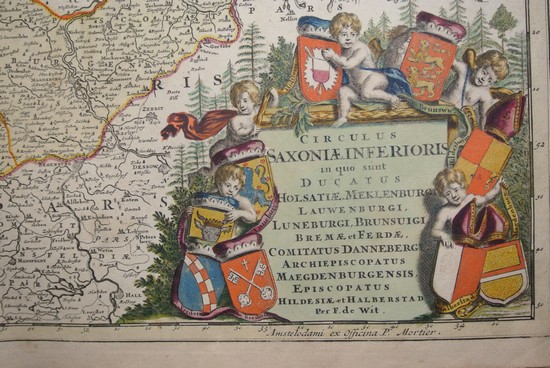Ca: 1835.
Holländsk kartgravör. Inga övriga upplysningar hittade.
(1812–1879) was a British born American artist working in watercolor, gouache, lithography, and engraving.
Hill's work focussed primarily upon natural subjects including landscapes, still lifes, and ornithological and zoological subjects. In the 1850s, influenced by John Ruskin and Hill's association with American followers of the Pre-Raphaelite Brotherhood, his attention turned from technical illustration toward still life and landscape.
Hill was the son of British aquatint engraver John Hill. He emigrated with his parents from London to the United States in 1819, initially living in Philadelphia. In 1822 the family moved to New York, where Hill apprenticed in aquatint engraving in his father's shop.
In 1838 Hill married Catherine Smith - their children included the astronomer George William Hill and the painter John Henry Hill.
In watercolor and aquatint engravings, Hill employed a stipple technique, building up planes of softly gradated colors made of tiny brushstrokes–a process commonly seen in painted miniatures. Applied to a larger scale on canvas the result was a form of objective real...
1862-1948. Född i Bergen, död i Oslo.
Norsk officer. Började studera 1882, blev officer 1889 och kapten i 'Bergenske Brigade' 1897. 1916 tog han avsked. Under åren 1895-99 var han mättekniker vid 'Norges Geografiska Oppmåling'. Till Norges jubileumsutställning 1914 utförde han ett par stora reliefkartor. Han var även målare och bildhuggare och deltog i flera utställningar och tävlingar. Under en tid ledde han Bergens konstförening.
Amiral Häggs flaggkarta. - Stockholm 1888.
Circulus Saxoniae Inferioris. - F. de Wit, Pieter Mortier ca 1710.



